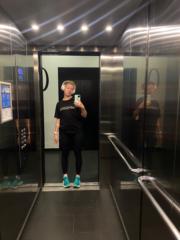Jan 28 (edited) • General discussion
Understanding RED-S 🟥 (Relative Energy Deficiency in Sport)
I first heard about RED-S this summer. While studying to become a running coach, a classmate of mine, who specializes in women’s triathlon, shared an article on the topic with me. At the time, I was in the midst of an exciting phase—training in the mountains and participating in various races. However, after a while, I began to feel increasingly tired, and even my easy runs started to feel like a struggle. After reading the article, it became clear: I was experiencing RED-S. 😔
Now, being knowledgeable about this has changed my understanding of training, nutrition, and recovery, while also raising awareness about this very important topic.
It’s estimated that over 40% of professional athletes suffer from RED-S, and the number may be even HIGHER among amateur athletes and fitness enthusiasts. RED-S occurs when athletes consistently burn more energy through physical activity than they consume through their diet. Over time, this energy deficit can lead to a wide range of symptoms, including hormonal imbalances, reproductive issues, insomnia, fatigue, weakened bones, injuries, and a higher risk of anxiety and depression.
Many triathletes, runners, and climbers aim to stay lean and maintain their “competition weight” year-round. While weight is important in sports that rely on power-to-weight ratio, insufficient calorie intake to match training demands can lead to fat retention and muscle loss. Irregular or inadequate eating can cause the body to store fat, resulting in RED-S.
However, the reasons for reduced calorie intake can be both conscious and unconscious.
Statistics on RED-S in Sports
- Prevalence: Studies show that 40% of female athletes and up to 25% of male athletes in endurance sports experience RED-S or low energy availability.
- High-Risk Sports: Endurance sports like running, cycling, swimming, and rowing have the highest prevalence. For example:
- Runners: Up to 50% of elite female runners show signs of RED-S.
- Cyclists: Approximately 20-30% of male and female cyclists report symptoms.
- Dancers and Gymnasts: Also at high risk due to aesthetic and weight-focused pressures.
- Amateur Athletes: RED-S is not limited to elites; recreational athletes are also at risk, especially those training intensely without proper nutrition.
🟥 Symptoms of RED-S🟥
Physical Symptoms:
- Feeling tired or fatigued despite getting enough rest
- Frequent injuries, especially stress fractures.
- Irregular or absent menstrual cycles in females.
- Low testosterone levels in males.
- Reduced performance in training and competition (even if you're training as hard as before).
- Slower recovery times after training or competition.
Psychological Symptoms:
- Irritability, depression, or anxiety.
- Feelings of low motivation, frustration, or sadness without a clear reason.
- Obsession with food, weight, or body image
Metabolic Symptoms:
- Reduced bone density (osteoporosis or osteopenia).
- Low resting heart rate or blood pressure.
- Decreased appetite or loss of interest in food could also signal that the body isn't in a good state.
What is Energy Availability (EA)?
To function properly, the body needs enough calories to support basic life functions (resting metabolism) plus additional calories for training and recovery. Energy Availability (EA) is the amount of energy left after subtracting exercise energy expenditure from total calorie intake, expressed in kcal/kg of lean body mass.
Formula for EA:
EA = (Energy Intake - Exercise Energy Expenditure) / Fat-Free Mass
For example:
- Energy Intake = 2000 kcal
- Exercise Energy Expenditure = 700 kcal
- Fat-Free Mass = 47.2 kg (assuming 20% body fat at 59 kg)EA = (2000 - 700) / 47.2 = ~25 kcal/kg
A healthy EA is around 45 kcal/kg. Levels below 30 kcal/kg can seriously harm health. When EA drops too low, the body enters a state of Low Energy Availability (LEA), similar to a phone switching to power-saving mode.
In LEA, the body slows metabolism to conserve energy, leading to hormonal changes that increase fat storage and reduce muscle mass. This makes it nearly impossible to lose weight or improve body composition, which can frustrate athletes who think they need to train harder or eat less.
Key Points About RED-S and LEA:
👉Athletes with RED-S aren’t always underweight. The body may respond to calorie deficits by holding onto fat and losing muscle.
👉For women, a clear sign of LEA is irregular or absent menstrual cycles.
👉LEA can result from eating too little, training too much, or both.
Why Do Athletes Experience RED-S?
🚵 Energy Imbalance: Athletes burn more calories than they consume, often due to intense training and inadequate nutrition.
😔Pressure to Perform: Fear of weight gain or desire to achieve a certain body composition can lead to restrictive eating.
🤔Lack of Awareness: Many athletes and coaches are unaware of the risks of underfueling.
🤸 Misconceptions: Beliefs like "lighter is faster" can contribute to unhealthy habits.
RED-S and LEA are serious conditions that can harm both health and performance. If you’re experiencing symptoms like fatigue, frequent injuries, or irregular periods, it’s crucial to reassess your energy intake and training load. Prioritizing proper nutrition and recovery is key to staying healthy and performing at your best.
This topic is crucial and if you would like to hear MY story about RED-s I can make another post 🙂
5
18 comments

skool.com/become-better-runner-4238
Welcome to Better Runner ! This is where runners of all levels achieve their goals.
Powered by





